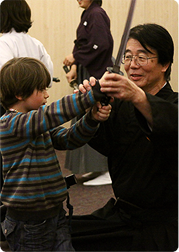 |
 |
元禄六年(1693年)から居合形・剣術を現代に
伝える古流武術です |
Inquiries |
TEL:03-6225-2950
FAX:03-3278-4212
E-mail:info@mugai.or.jp |
■About Mugairyu-Meishiha Iai Kata
|
|
The fundamental techniques of budo are for the protection of life as well as for taking life. The spiritual developmet of these techniques is what makes them budo. Saying that budo is budo without this technical development is no more than empty theory and useless bragging (about one's technical ability).
Until about 150 years ago, there was a period when it was not unusual to have to fight for your life at any time, but now, in times of peace, these techniques for taking life have become part of a "world of unknowns",
If you want to emphasize the "do (way)" in "budo" without recognition of the techniques, then there is no need to do budo. Do Zazen or yoga instead.
The foundation of budo will always be its techniques.
All of the above is a preface to what I would like to say about the Iai kata in Meishiha Mugairyu.
Iai kata are practiced repeatedly to raise the technical level of sword usage and body movements and differ from cutting (tameshigiri) and kumitachi.
In cutting and kumitachi, the roll (makiwara) or your opponent is standing in front of you, and they should be dealt with and those (appropriate) distances (ma-ai).
In Iai kata, we move to set our hearts free from our tiny bodies and fill up the universe (with our being) by moving as big as possible.
This is exactly the reason why Mugairyu is said to be "Moving Zen".
In Iai kata, I think movements that are compact and simply sharp because the enemy is imagined in front of you have no "quality" and are unrefined and poor.
Moving the sword in an ever extending way means reaching further with the sword each time.
As long as the difference between kata, cutting, and kumitachi is not properly understood, kata will always appear to be weak and unskilled.
Only one simple change of thinking can change your kata.
Iai kata are a step beyond cutting and kumitachi (in overall training). Kata are for training for your heart and mind.
(It's a fact that there are many people, even amoung shihan in our art, who do not understand [this concept]. Their upper limit does not extend this far.)
|
■ The Principles of the Mugairyu Foundation
|
-
The goal of the Mugairyu Foundation is to inherit the traditonal culture of Japan. Moreover, the Mugairyu Foundation plays its part in the character development of individuals while contributing to the peace and safety of society as a whole.。
Our goal is to welcome and instruct anyone regardless of race, nationality, religion, ideology, creed, or affiliation with other styles of budo. |
■ Organizational chart
|
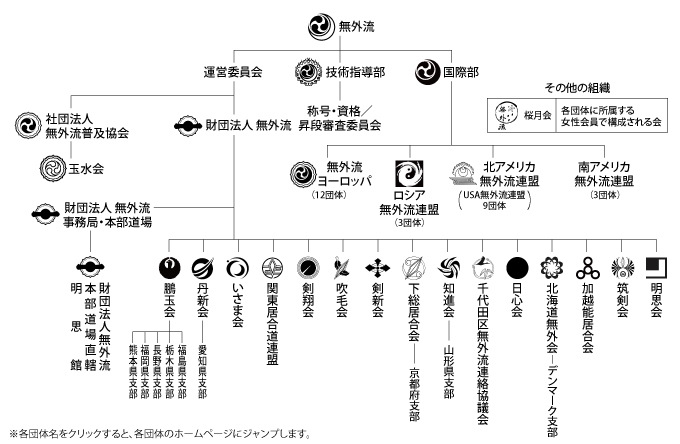 |
■ Dojyo map
|
All affiliated groups of the Mugairyu Foundation conduct training around Japan, based primarily in Kanto, as well as several countries around the world.
Each group in the Mugairyu Foundation has their own permanent facility ("dojo"), so members can train any time according to their schedules. Members may also come to practice late or leave early as their schedules demand. Each group uses various public facilities as well, so please feel free to watch a practice at the location and time that is most convenient for you. |
■ Practice place in Tokyo outskirts |
|
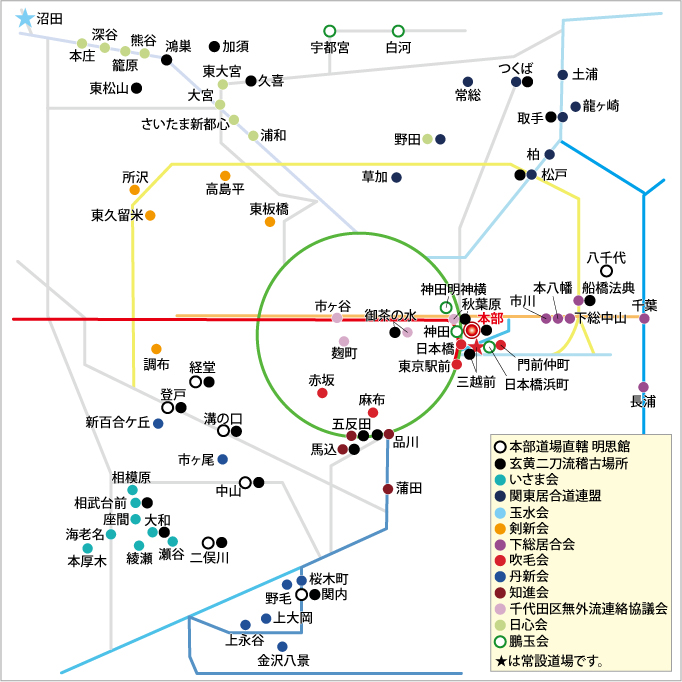 |
■ Practice place in Japanese various places |
|
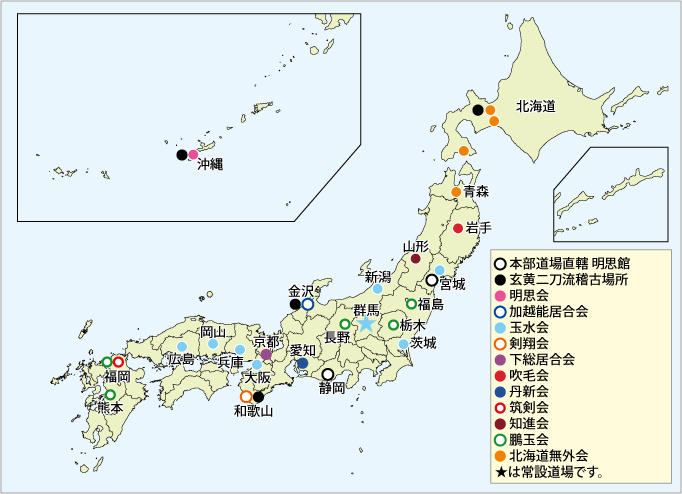 |
■ Practice place in many parts of the world & menbers |
|
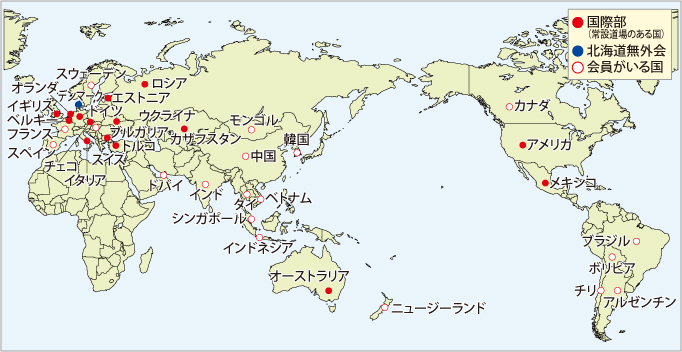 |
■ For Interested Individuals
|
|
【Health】
Men and women of all ages all over the world consider health to be one of their primary concerns. We need to stay healthy to live in in these times as well as for our families.
Our practice of "Mugairyu" is referred to as "Moving Zen," and as with zen, the workings of the mind are embodied in the kata we practice from the first bow to the last bow; a practice that is extremely useful for mental training. The kenjutsu training is also extremely effective for revitalizing synapses in the brain as well as agile footwork. It is possible to pursue this training regardless of age.
We have a 90 year old man and an 83 year old woman among our members now, and they are both working at their own pace and enjoying their training.
Training begins the moment you make up your mind to do it.
【Budo to Improve Metabolism】
We often hear stories about people who join a gym or take up running to improve their metabolism but abruptly quit because, simply put, they have no purpose to continue, but budo, because the the whole body is used and moves naturally, is effective for dieting.
Moreover, it is said that the cause of metabolic disorder comes from stress, but through accumulated training in the “moving zen” of iaido, it is possible to consistently maintain stable mental health.
【Comradery】
Again, today after training, several college girls and retired businessmen stopped into an izakaya for some stew and are having an animated discussion about iaido. For all of you still working and those of you who have already retired, can you imagine this scene?
After weekday afternoon training as well, housewives and older gentlemen, along with a few young people who are free in the afternoons, forget about the time and talk about iaido over coffee.
This is a typical scene after our training sessions.
【Friendly, Polite Instruction for Beginners】
Every Saturday and Sunday morning and Monday evening, we hold “Beginner Iaido Training” courses when we teach everything from how to wear a hakama to basic cutting techniques, so even individuals without prior budo experience can comfortably join our training sessions.
Beginners who are unable to attend these beginners’ courses can, of course, learn these basics at any of our training areas and dojos as well.
【Instruction for Children】
Our goal is to teach children how to protect themselves while helping them grow. We teach pre-school age children through elementary school beginning with short staff techniques and then progressing to iaido and kenjutsu. During the childrens' class times, we also hold classes for their parents and guardians that are not open to general members, so it is possible (and encouraged) for parents to train alongside their children.
|
|